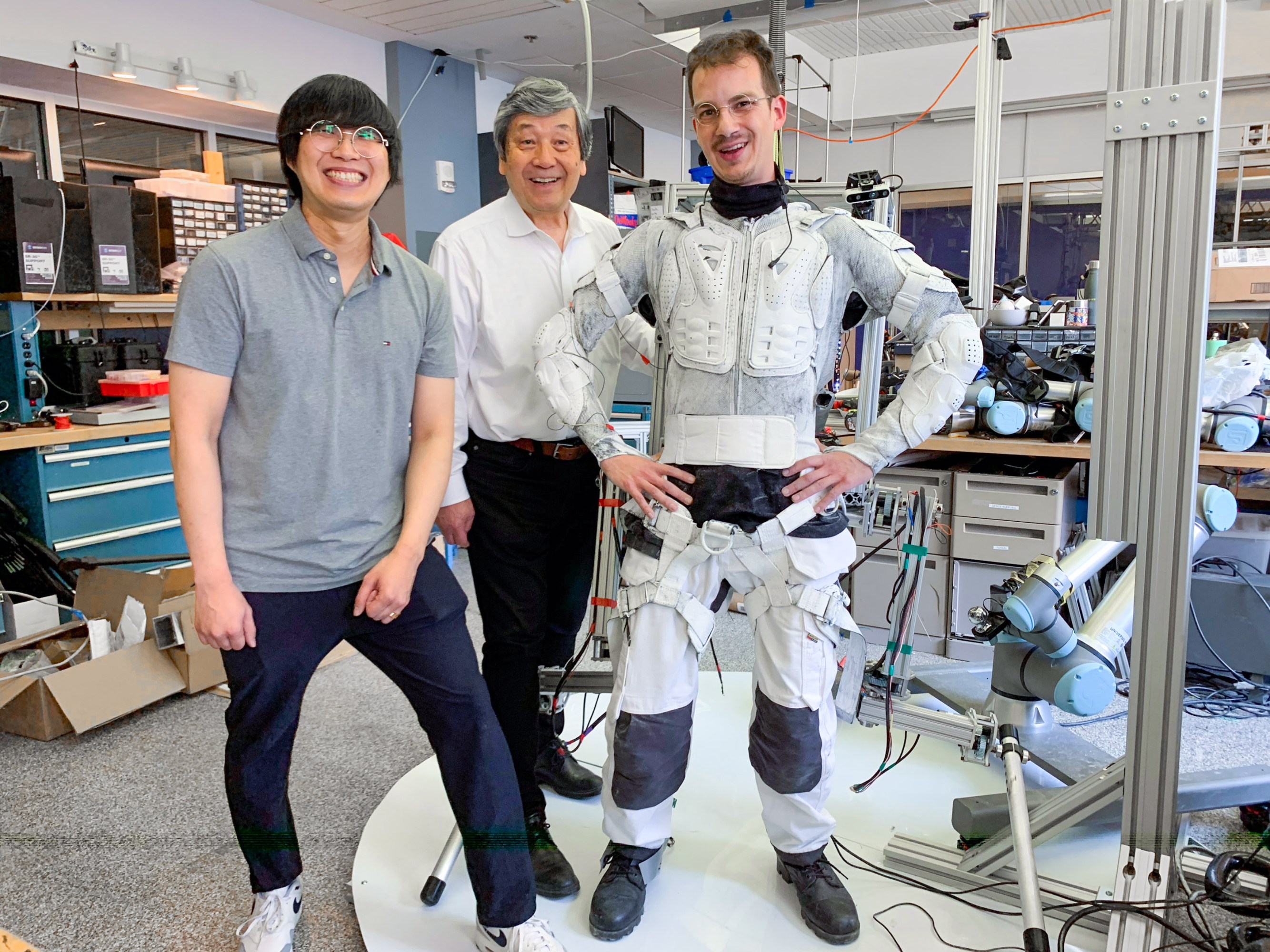SuperLimbs for astronauts
It’s hard not to laugh at NASA’s blooper reel of astronauts falling and bouncing in slow motion on the moon. But coping with inertia where gravity is one-sixth that of Earth is no laughing matter when you’re wearing a constricting space suit and need to finish an exhausting task. So mechanical engineering professor Harry Asada (center) and colleagues are developing wearable robotic limbs to help astronauts get back on their feet after a fall. Based on the “SuperLimbs” Asada designed to assist construction workers and ship builders, the limbs extend from a backpack that would also contain the astronaut’s life support system along with a controller and motors to provide power. As part of NASA’s planned Artemis mission, astronauts will be expected to build the first permanent moon base—a physically demanding project with a high risk of falls during multiple extended extravehicular activities (EVAs). “We think that SuperLimbs can help them recover so they can be more productive and extend their EVAs,” says doctoral student Erik Ballesteros, SM ’23 (right). Postdoc Sang-Yoep Lee (left) is a coauthor of a paper on the work.





